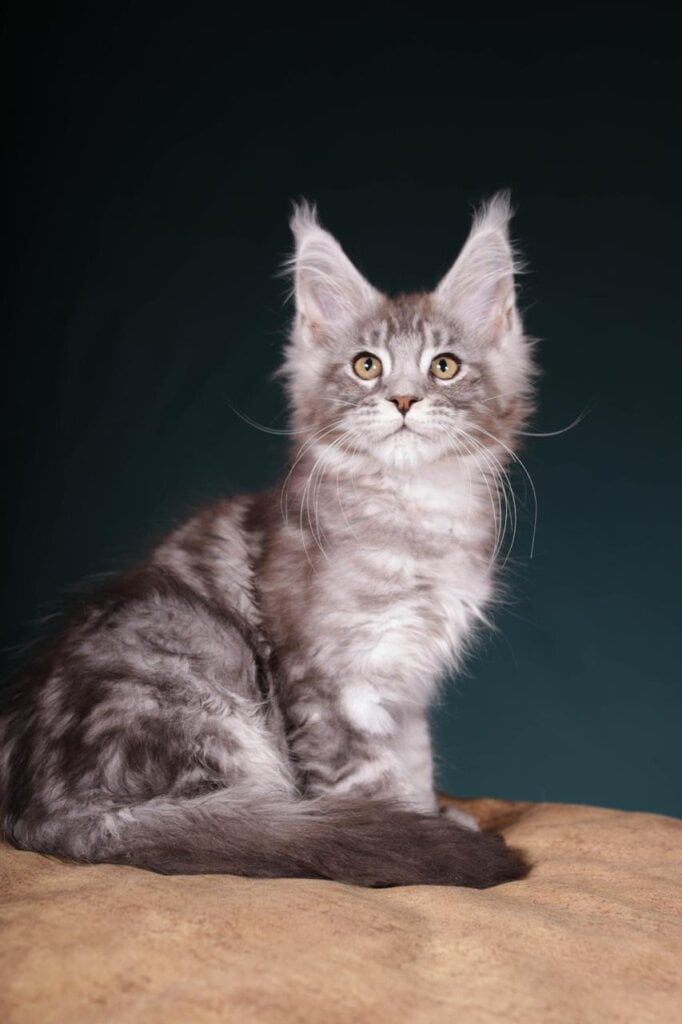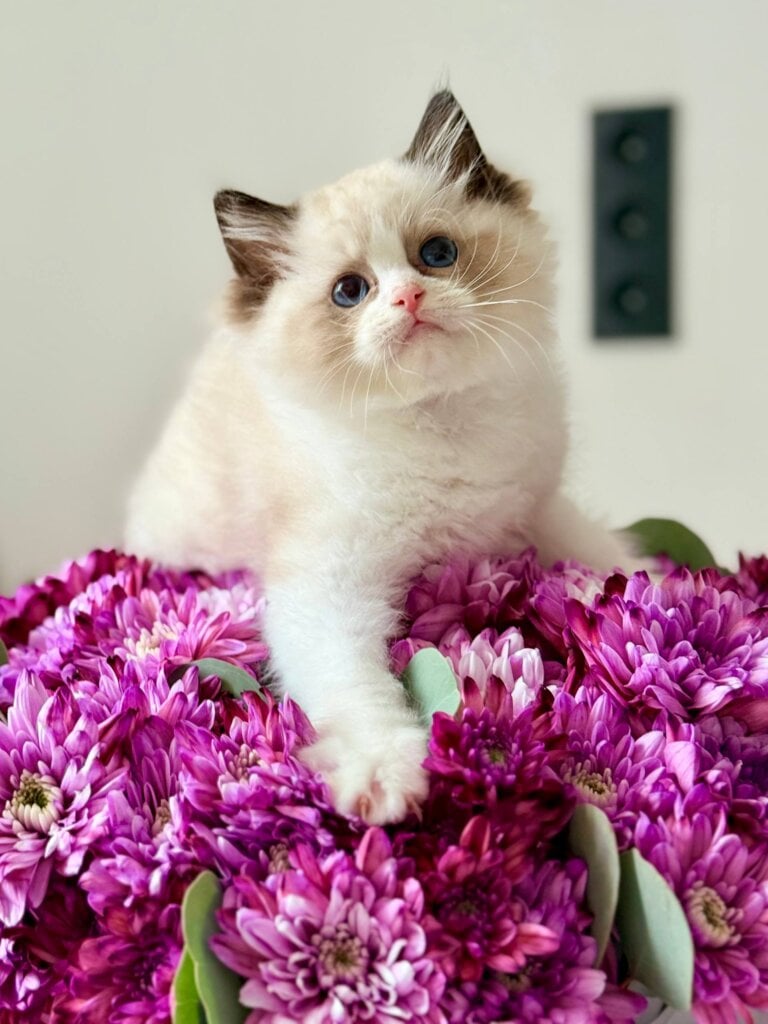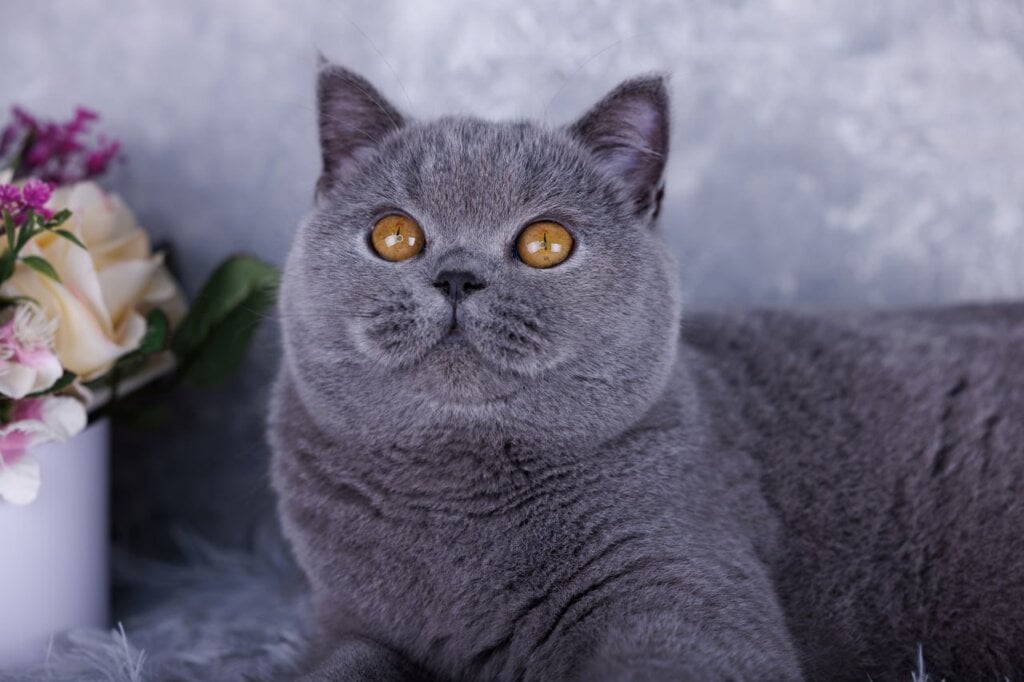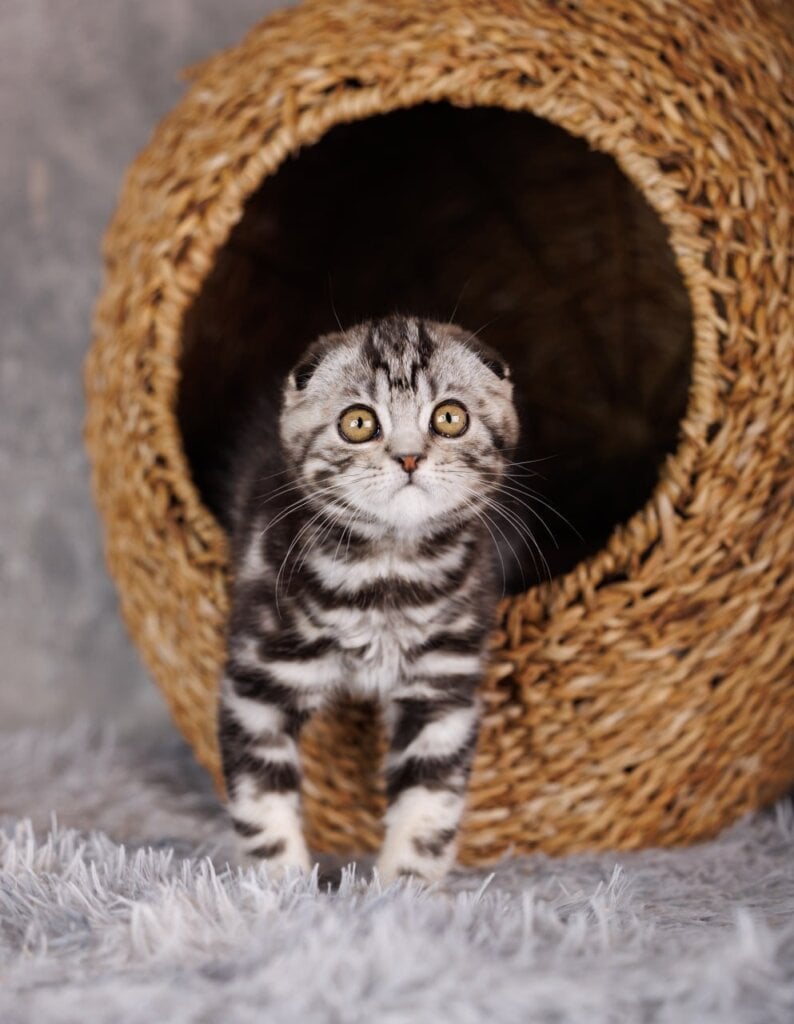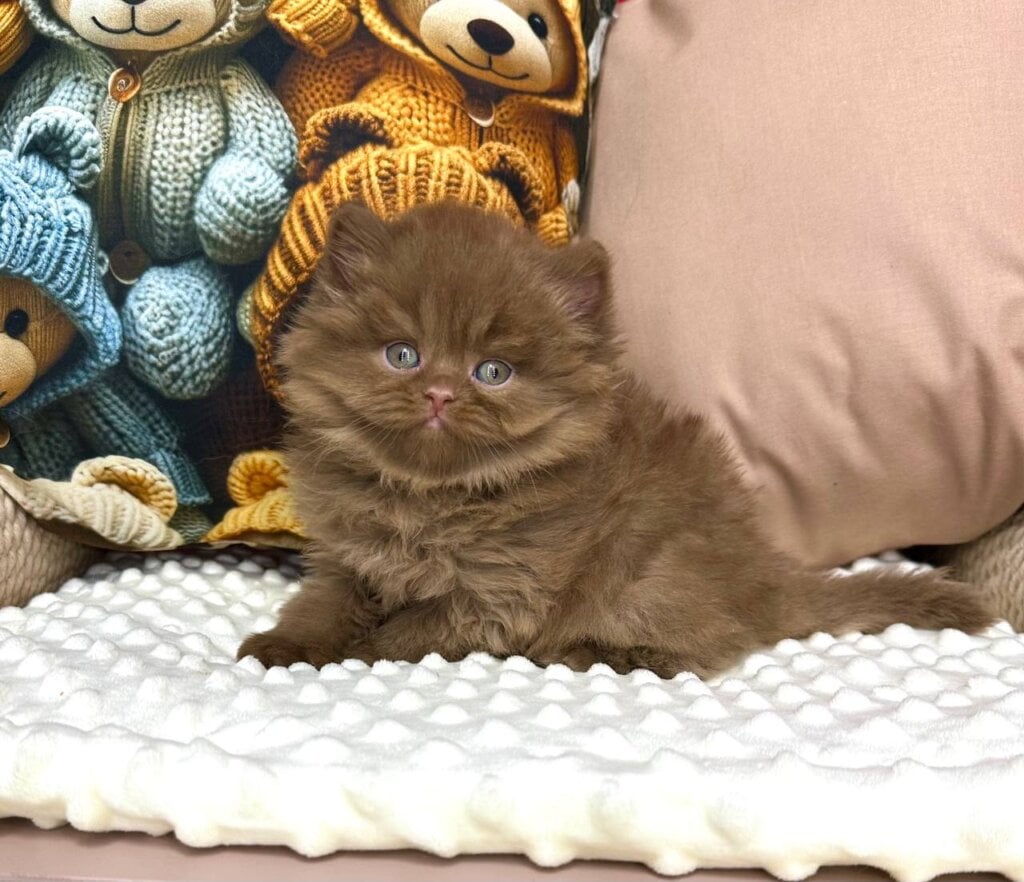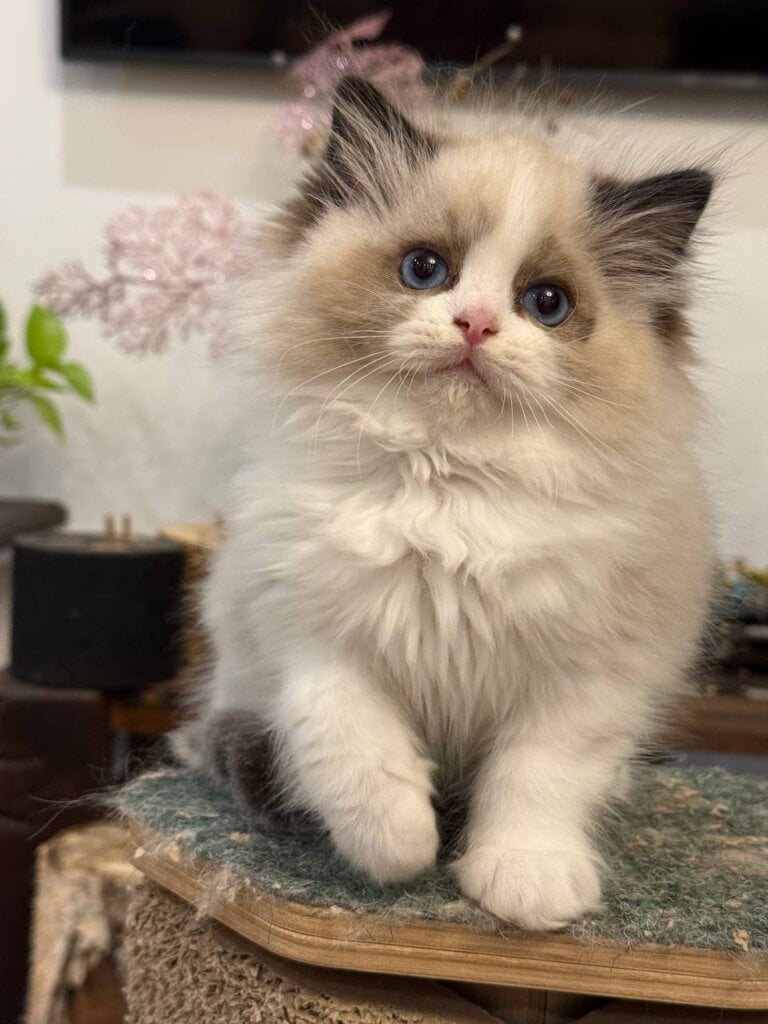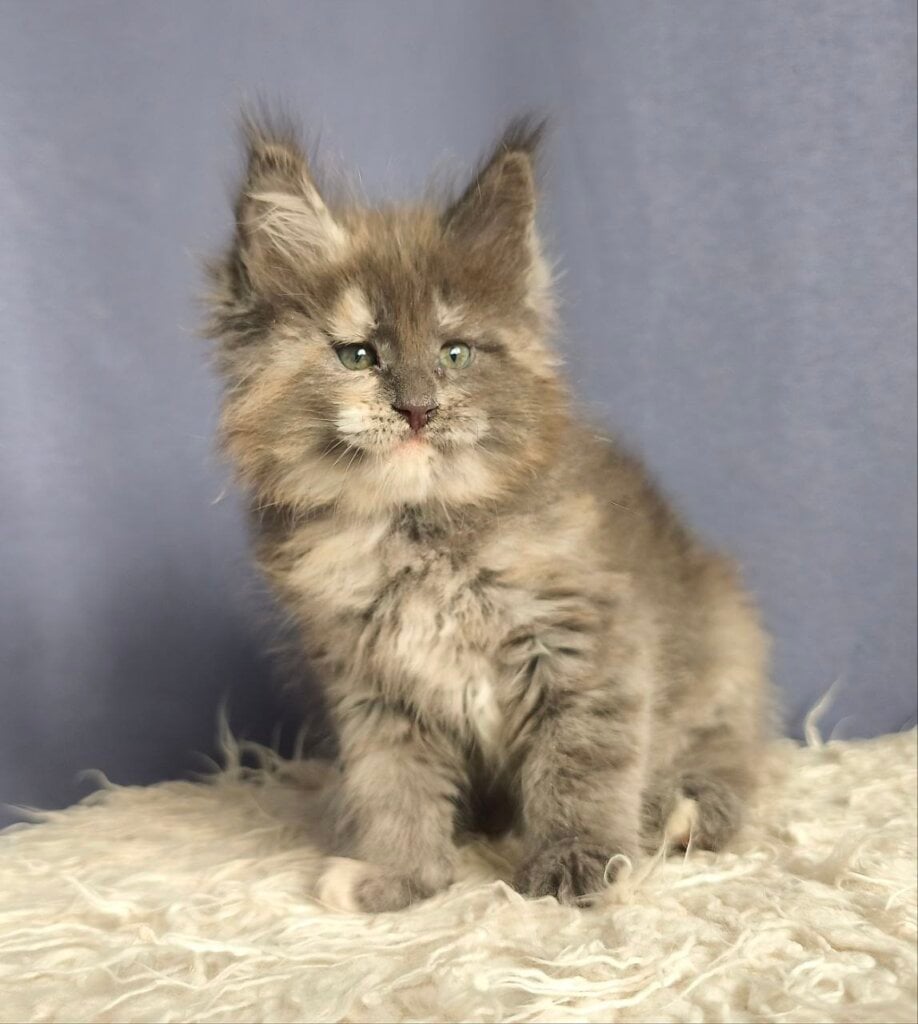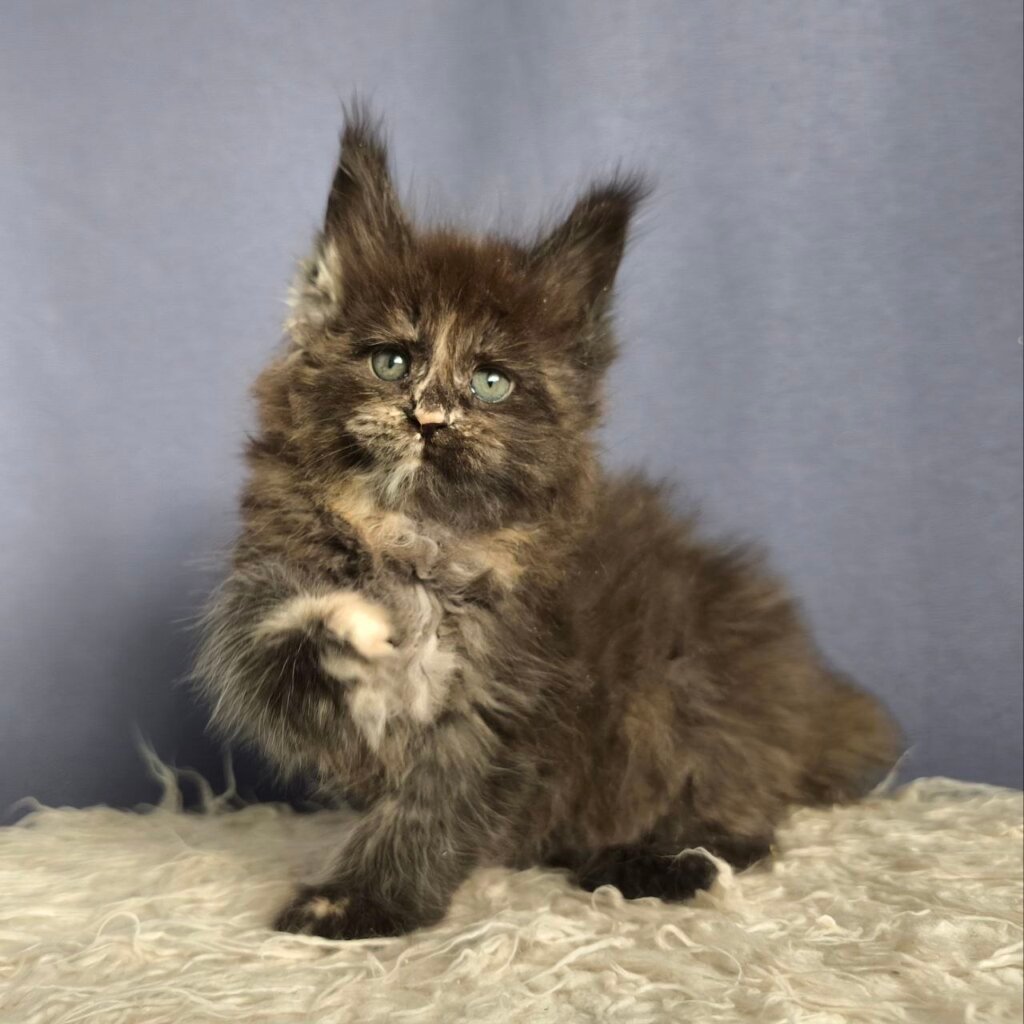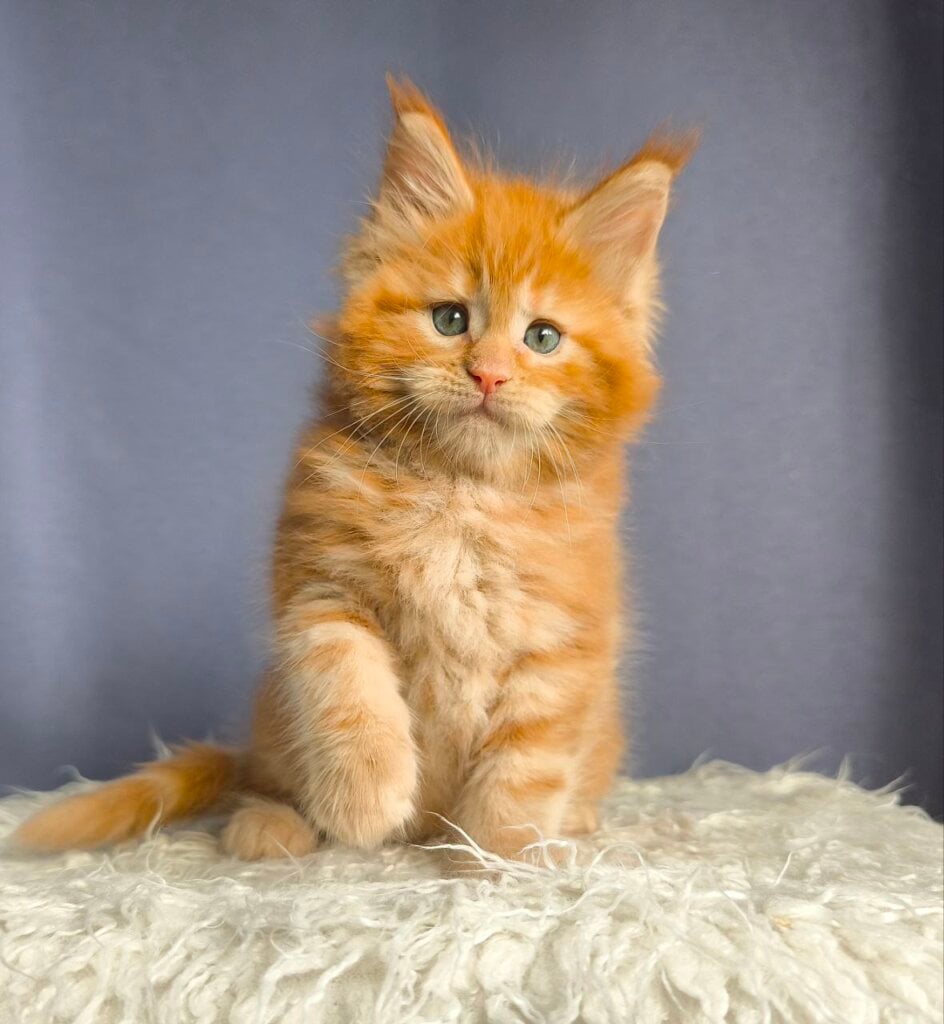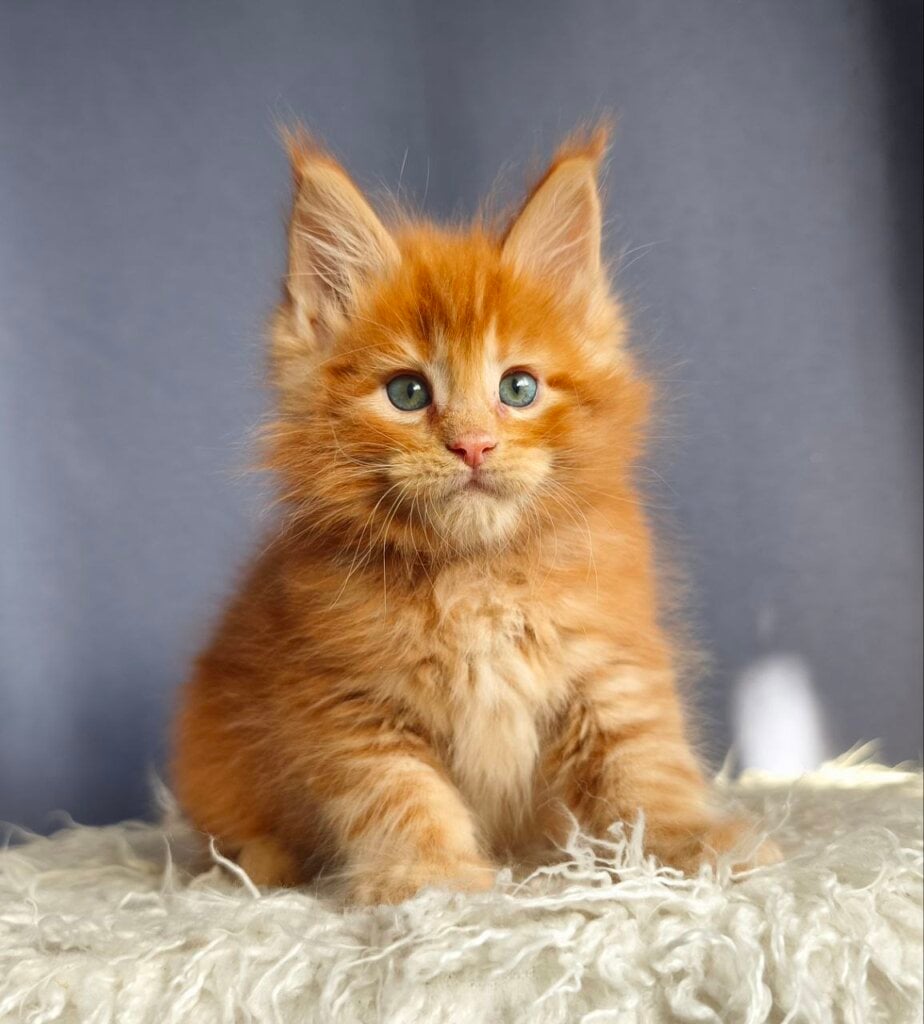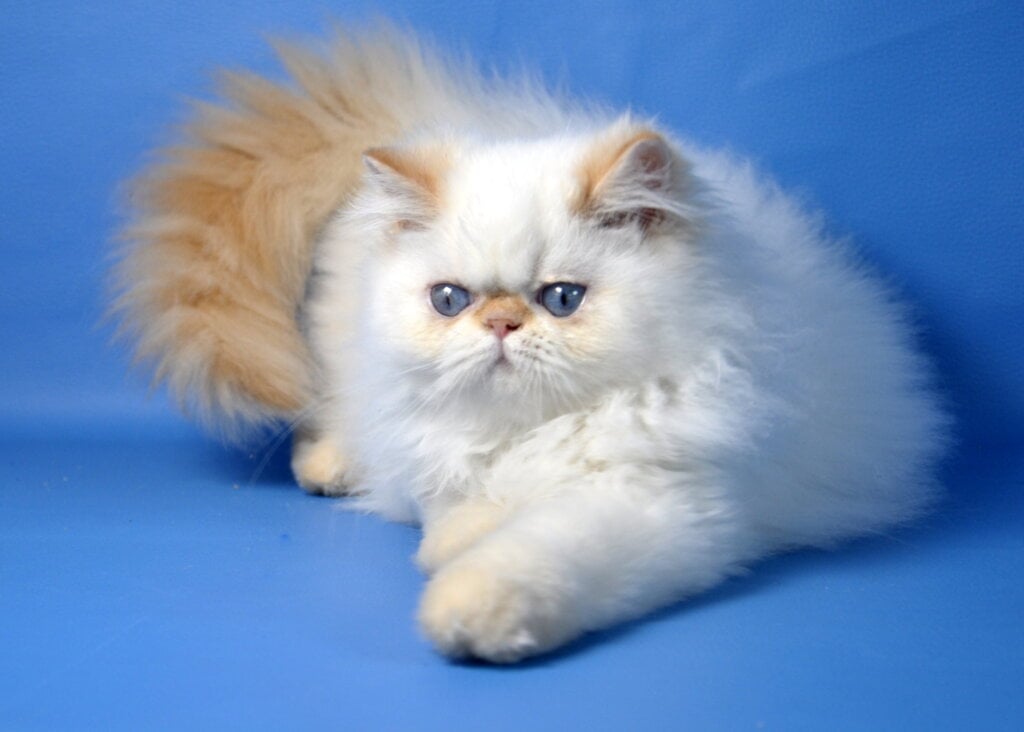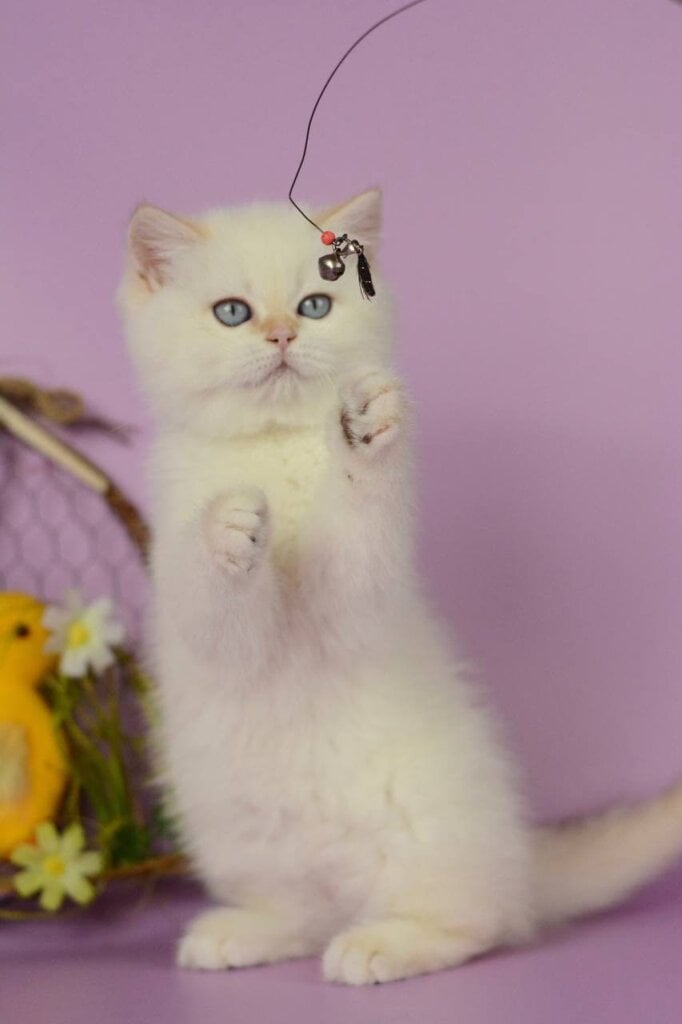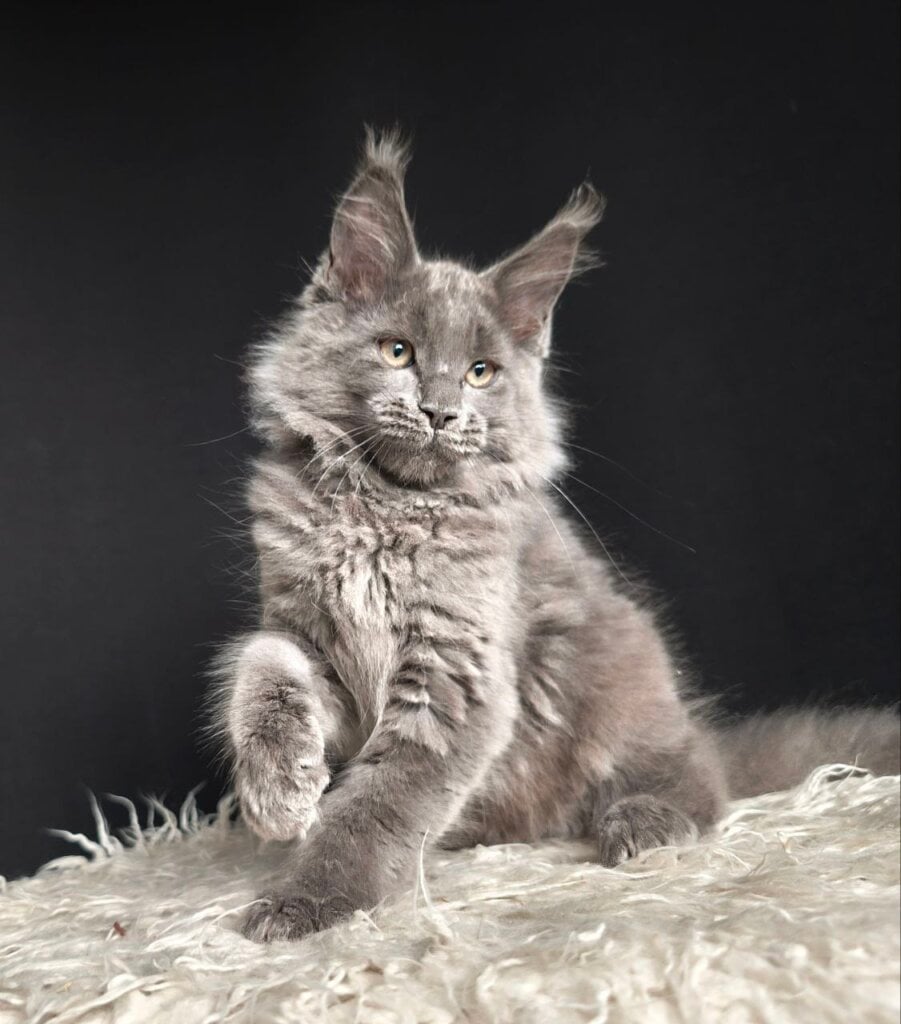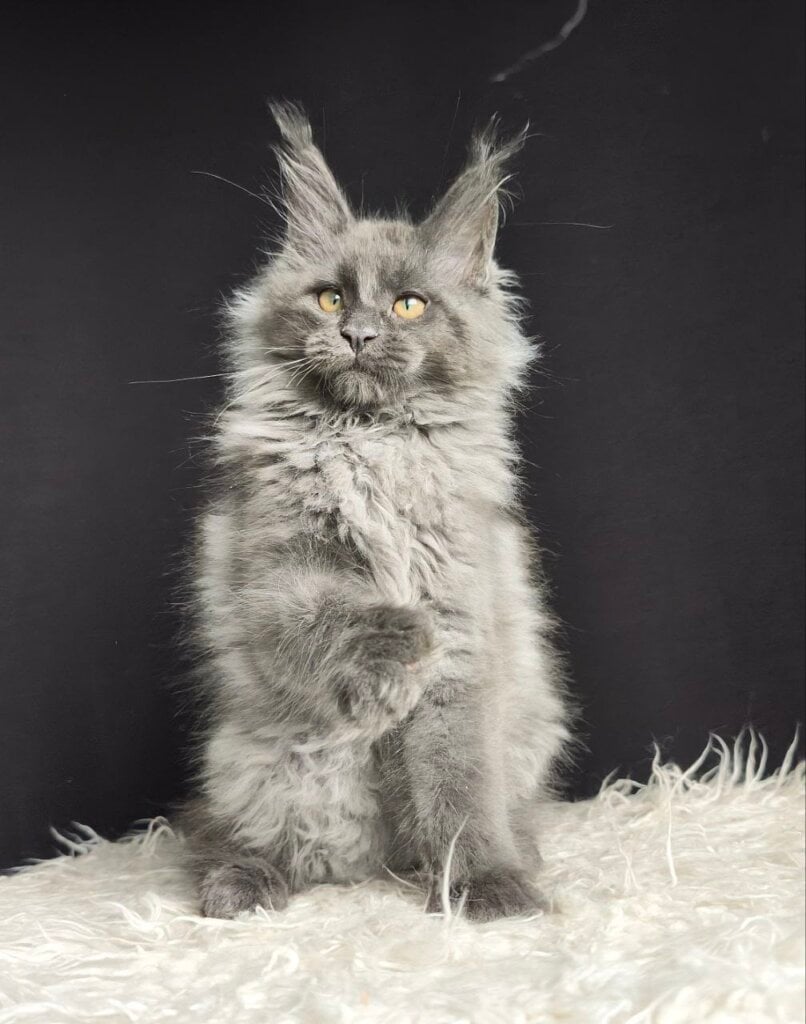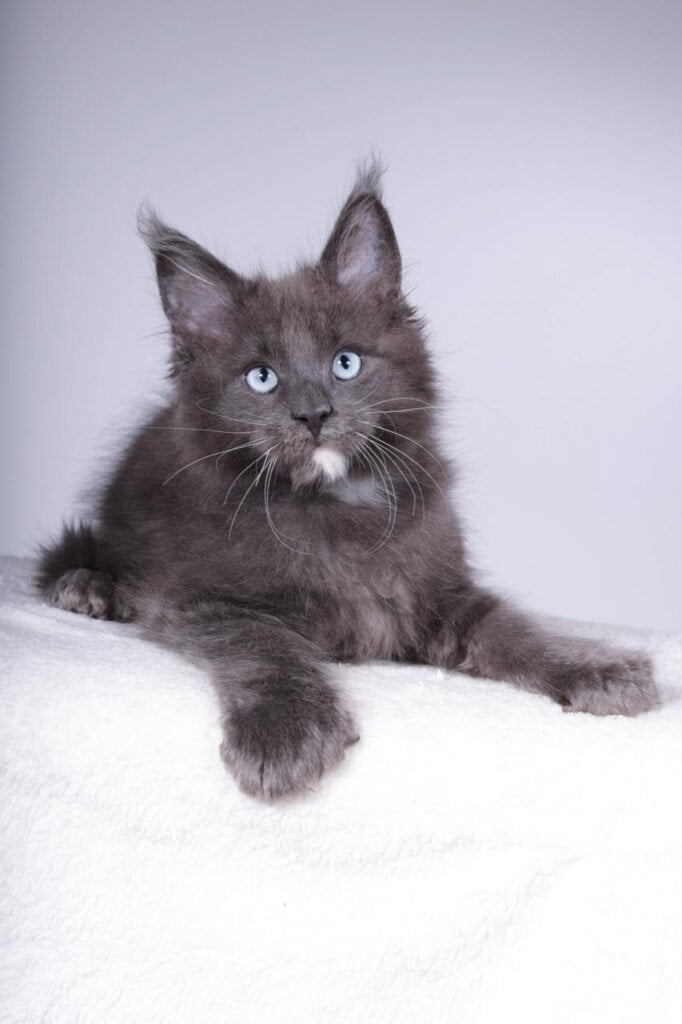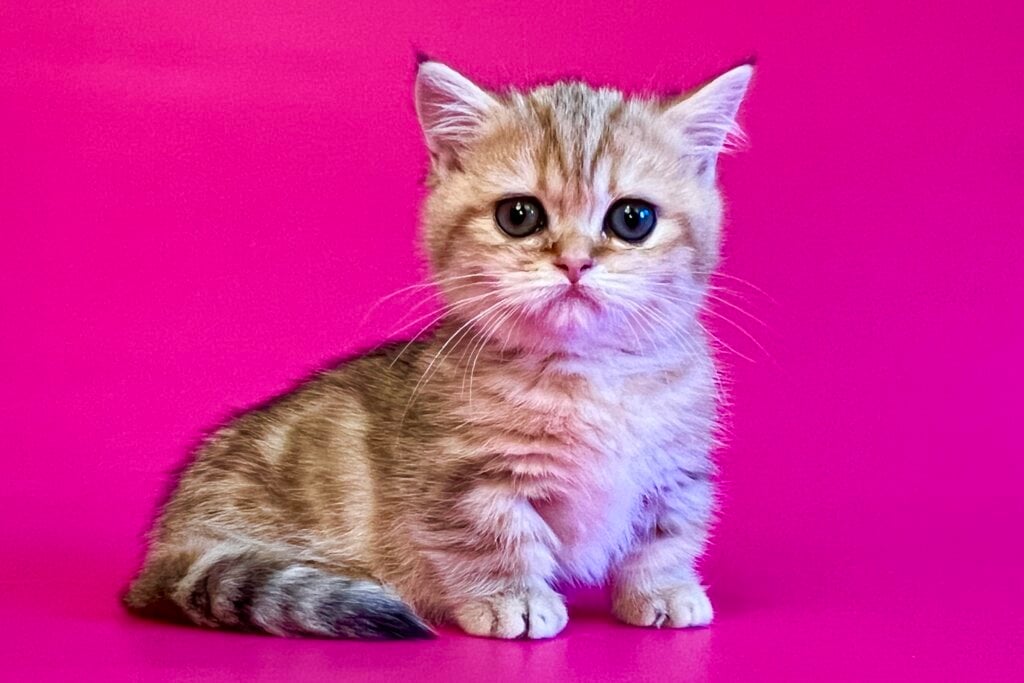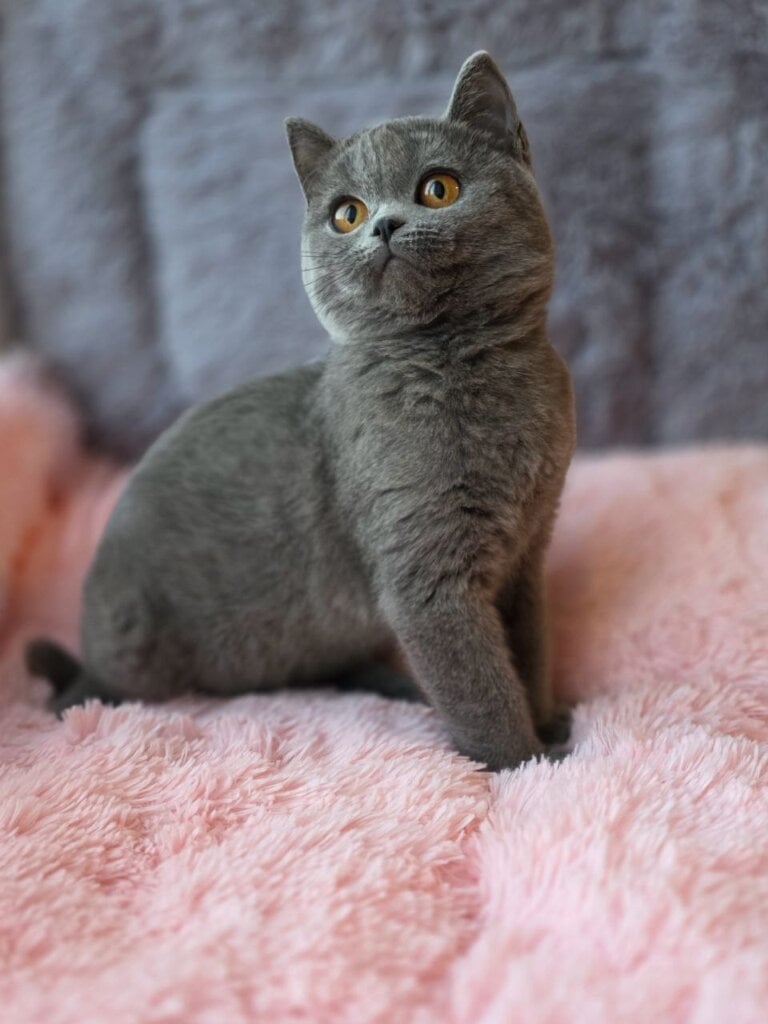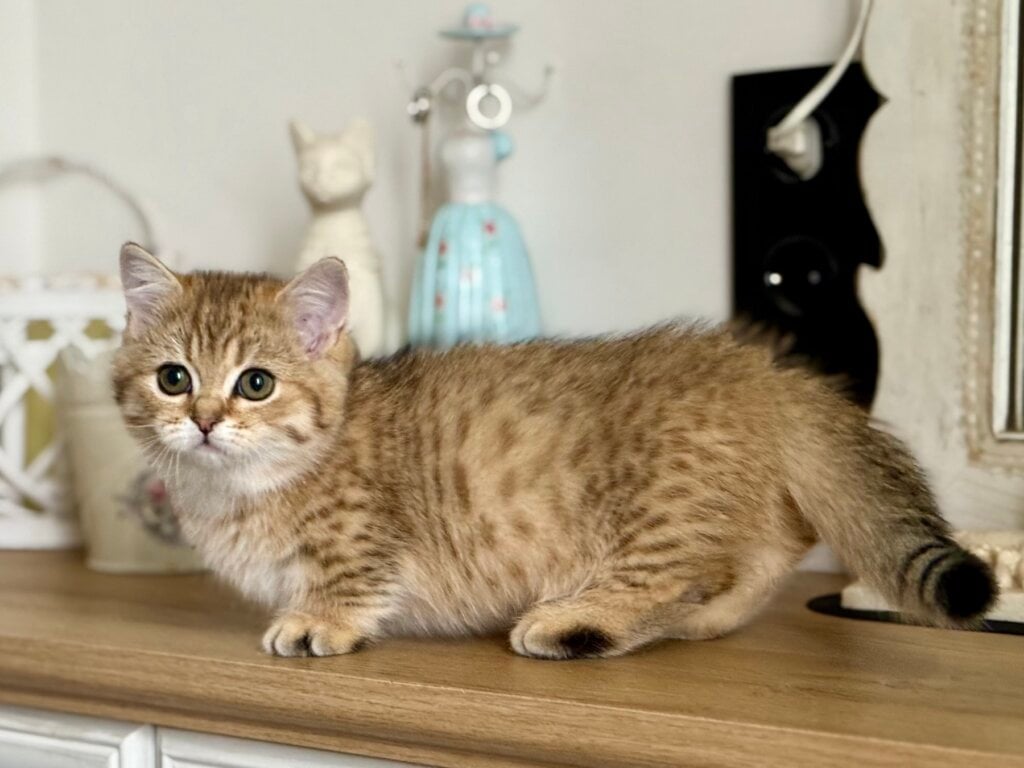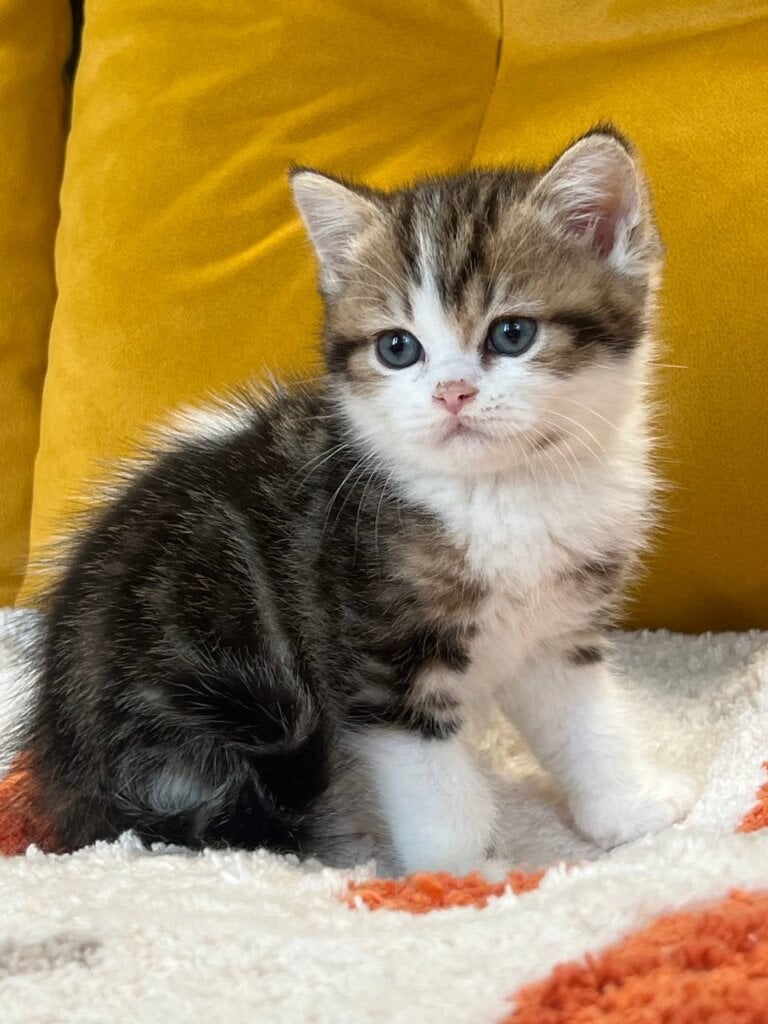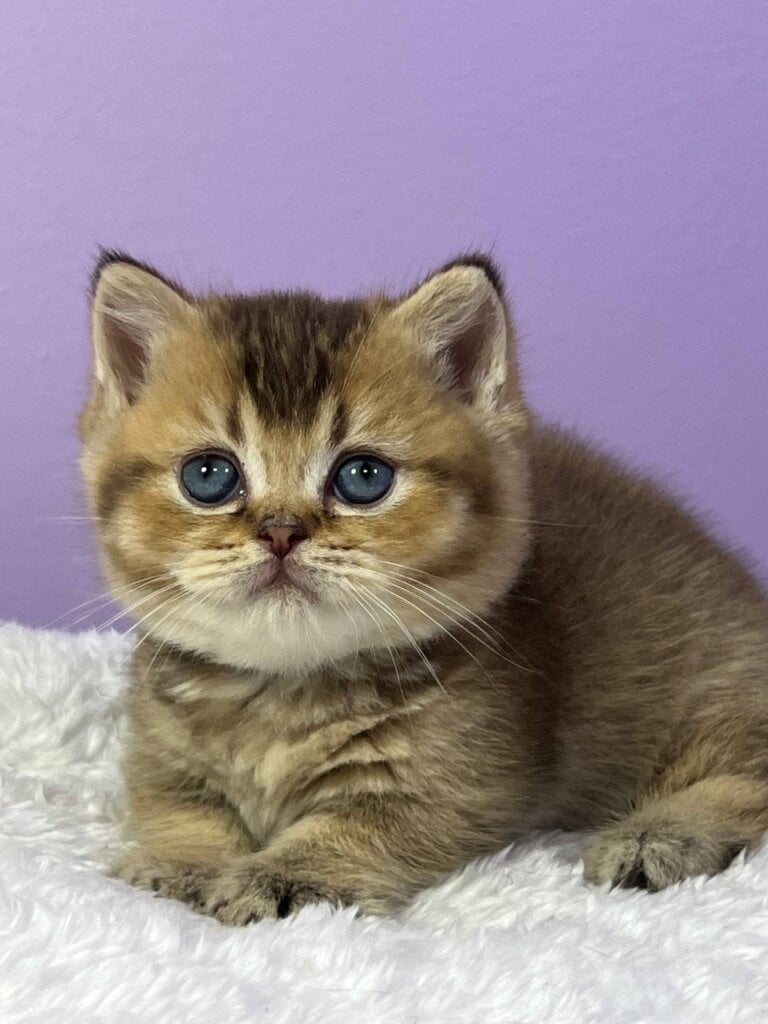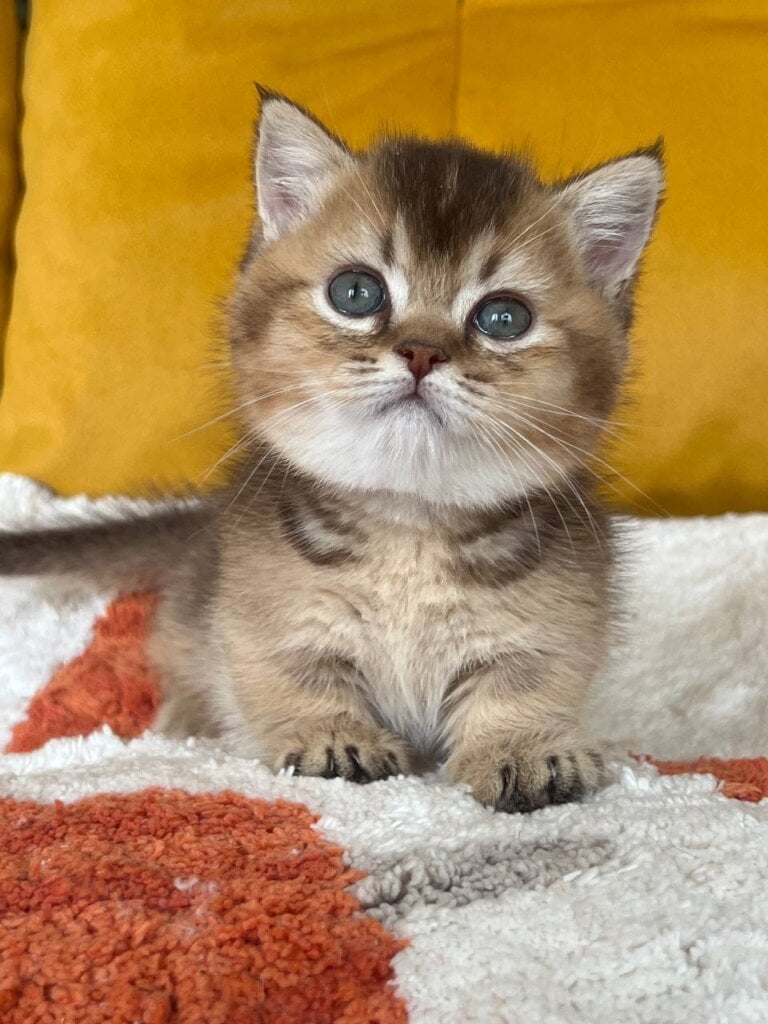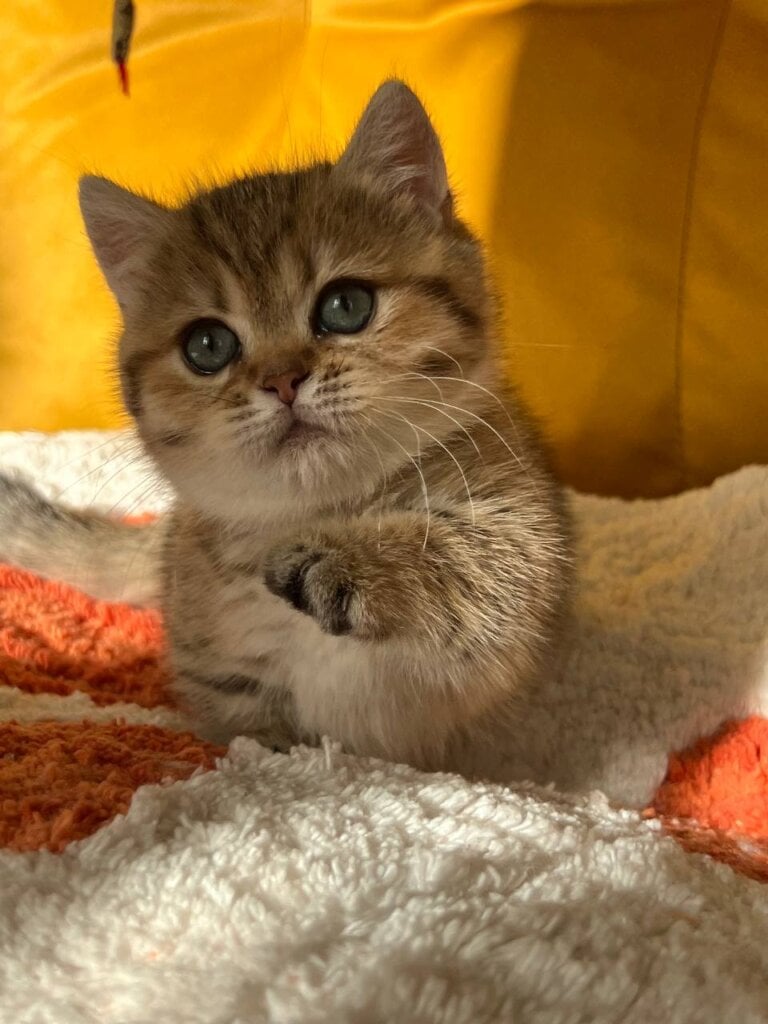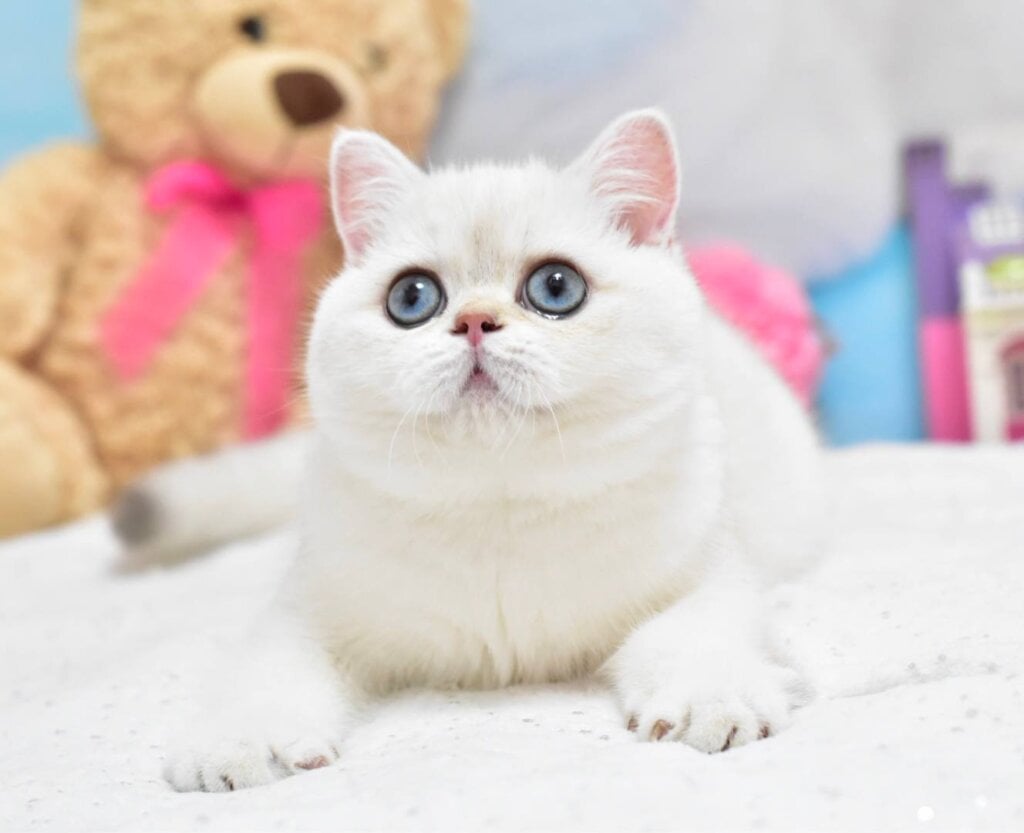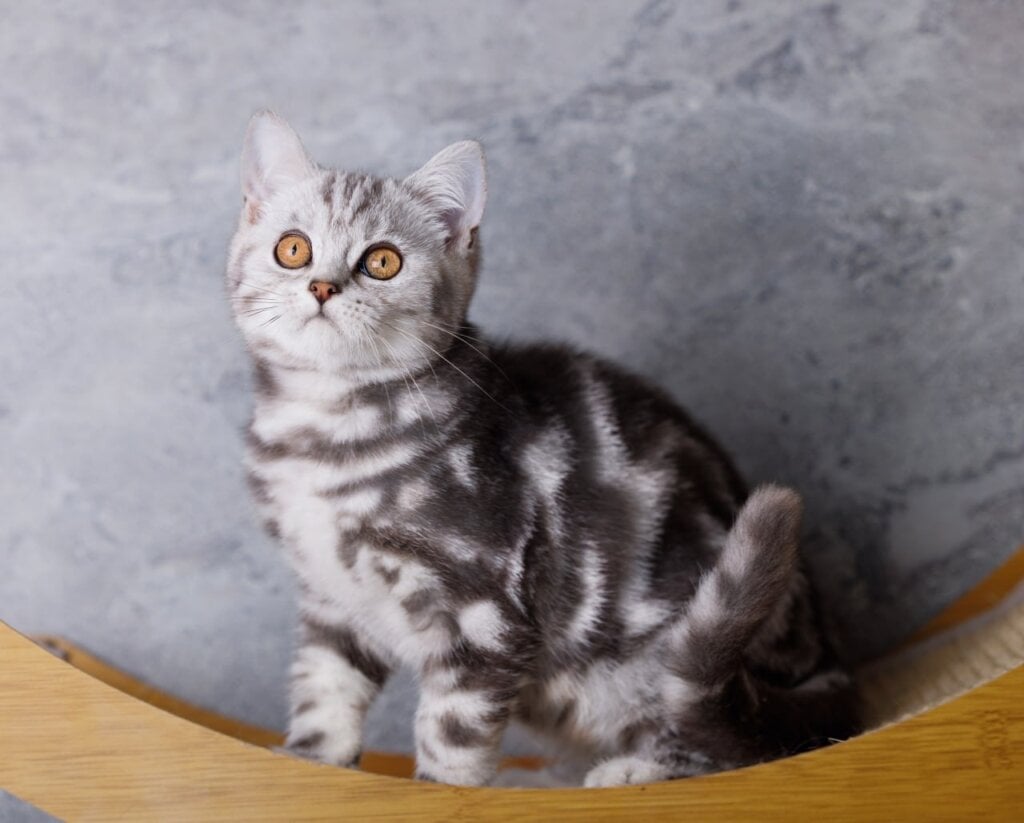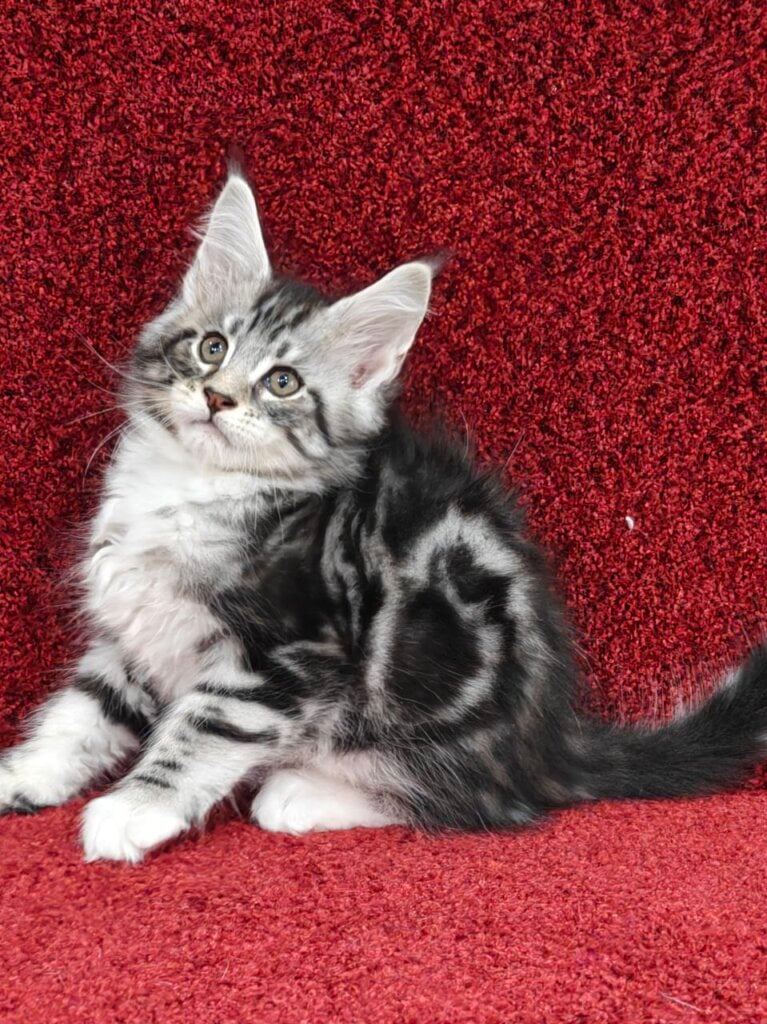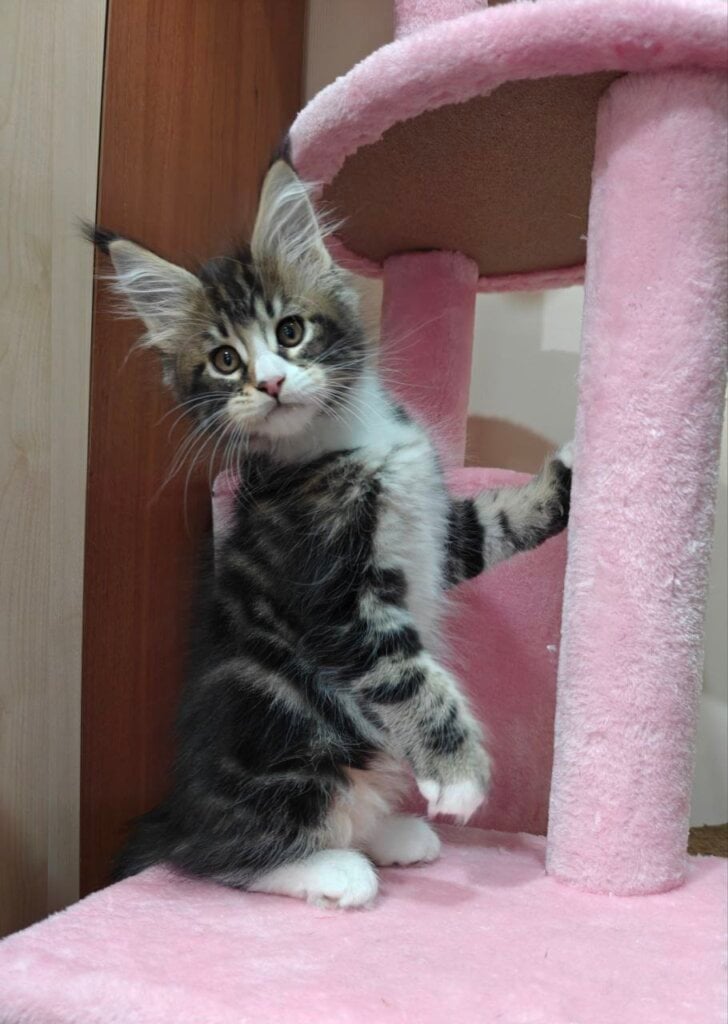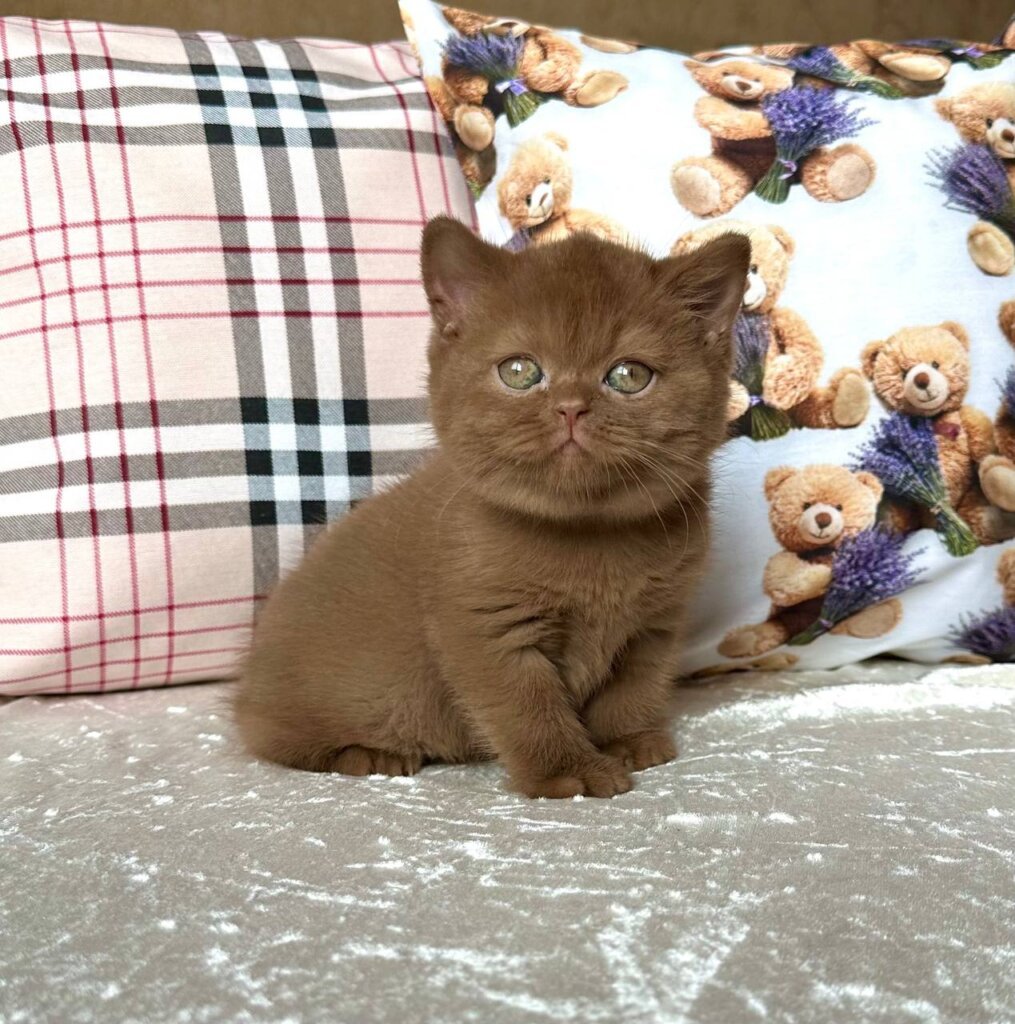British Shorthair cats require brushing only once or twice a week to maintain their coat and prevent matting. Their dense double coat tends to shed more during the spring and fall so brushing more frequently during these periods can be beneficial. Frequent brushing reduces loose hairs throughout the home and keeps skin healthy. For families or anyone new to cats, this easy action goes a long way toward your cat’s comfort.
Your Brushing Frequency Guide
British Shorthairs feature luxurious coats that require regular maintenance to keep them in prime condition. Brushing controls shedding, avoids matting, and distributes oils. The appropriate schedule varies based on your cat’s age, condition, the season and how accustomed they are to being groomed.
1. The Baseline
Begin by brushing your British Shorthair once weekly. This helps keep the coat in good condition and reduces shedding and hairballs.
If your cat is a bit thicker or sheds a lot, attempt brushing every day, at least for the heavy shedding seasons. Brushing every day helps you identify tangles or the first signs of skin problems early on. Some cats are grooming junkies, and you just may catch your British Shorthair soaking up the attention. While some like them fast. See how your cat responds. If your cat squirms or walks away, attempt again later or use a softer brush. Because every cat is unique, create a schedule that works for their ease and your availability.
2. Seasonal Shifts
With the change of seasons comes the shedding of your British Shorthair, particularly in the spring and fall. This is when their coat becomes thick or sparse according to the season.
During these periods, increase brushing to once a day. This pulls off loose fur, keeps your living space cleaner, and reduces hairball danger. You might find extra fur around furniture or your apparel. That’s an indication that you need to brush more frequently. Watch for clumps in their coat or extra shedding. If you need to shift the schedule, do so-flexibility is good for you and your cat.
3. Kitten vs. Adult
Kittens require brief, mild brushing a couple of times a week. This acclimates them to the routine early and develops great habits for a lifetime. Utilize a soft brush and make each session short, so grooming seems secure and exciting.
Adult dogs require frequent brushing to maintain a plush, healthy coat. For the majority, once or twice a week is sufficient unless they begin to shed more. Nevermind, always change the technique with age. Kittens enjoy playful, short sessions and adults can often tackle longer ones.
4. Senior Years
Brush your senior British Shorthair more frequently to prevent matting. Use a gentle hand, as senior cats can have delicate or painful skin. Examine their coat a few times per week. If you notice mats or dull fur, brush more frequently.
Talk to your vet if you’re unsure.
5. Health Status
Determine your cat’s health prior to creating a brushing schedule. If your British Shorthair is having skin problems, consult your vet for the ideal brushing method. A few require special attention if they’re fatigued or ill. Observant to shifts-less grooming could mean your cat isn’t feeling well.

Why Brushing Matters
British Shorthair cats have plush, dense coats that require regular attention. Brushing isn’t all about aesthetics-it keeps your kitty cozy, healthy, and content. A weekly brushing not only eliminates dirt and loose fur but can help you catch health issues early. This habit reduces shedding and provides a shiny coat by distributing natural oils. Brushing time allows you to bond and check for any lumps or skin issues, helping your cat’s overall health.
Skin Health
| Grooming Practice | Impact on Skin Health |
|---|---|
| Weekly brushing | Reduces dirt buildup, less irritation |
| Checking for bumps | Early detection of skin issues |
| Using soft brushes | Prevents scratching or abrasions |
| Cleaning dense areas | Keeps skin fresh and healthy |
Brushing removes dirt and debris, which helps prevent skin irritations and keeps your British Shorthair’s coat clean. Be sure to feel through the thick coat for strange lumps, bumps or areas of redness. Routine brushing can detect these changes early, providing you an early lead on care. A clean coat translates to less chance of skin issues such as ringworm or dermatitis.
Mat Prevention
Brushing your cat frequently prevents mats from developing, particularly around the tail, underarms and collar where fur is thickest. It’s painful and stressful for your cat and can cause skin problems if left unattended.
Dense areas, such as the undercoat, have the unfortunate ability to ensnare loose hair and quickly tangle it. A wide-toothed comb, or soft slicker brush, works great for these places! If you discover a little mat, work it out carefully by holding the fur close to the skin and brushing with short strokes.
Use cat-safe combs and brushes. Metal combs are wonderful for thick coats, but steer clear of stinging brushes that could scratch the skin. Be watchful for matting-if your cat is tender or you notice clumps, put extra attention on those spots.
Hairball Reduction
Brushing reduces the loose fur your British Shorthair could ingest, resulting in less hairballs. Furry cats can shed more, particularly in spring and fall, so weekly brushing is crucial.
A good brushing regimen translates into less self-grooming for your cat, so they ingest less hair. If you’re seeing more hairballs than usual, brush more often or change up your routine. Occasionally more fiber in their diet can assist but regular brushing is the simplest solution.
Owner-Cat Bond
Brushing is an excellent way to bond with your cat. Soft, slow strokes and soothing words make your British Shorthair feel secure.
A good brushing experience establishes trust. In fact, for prolonged periods, your cat may even anticipate these sessions. These stronger bonds can ramp up your cat’s friendliness and chillness around the house.
Take advantage of brushing time to monitor your cat’s temperament and health. It’s an easy thing that really matters for the two of you.
Choose the Right Tools
Brushing a British Shorthair isn’t all fluff-regular grooming helps maintain their dense, double coat in top shape and reduces shedding. Choose the right tools, and you’ll not only maintain your feline friend’s coat in prime condition – you’ll establish a bond of trust with your pet. Expensive tools aren’t necessarily superior, but quality brushes and combs do count. Clean tools last longer and work better, so clean them every time you use them. Experiment a bit to see what fits your cat’s coat and temperament.
- Slicker brush: Removes dead hair and debris from thick coats
- Metal comb: Detangles knots and smooths fur
- Deshedding tool: Tackles undercoat shedding, especially in shedding season
- Rubber mitt: Gently massages and collects loose hair
- Soft bristle brush: Good for kittens or sensitive cats
- Grooming scissors: For snipping away mats or dirty fur under the tail
- Dental treats or finger toothbrush: To keep teeth clean and reduce tartar
- Massage corner: For self-grooming and stress relief
The Slicker Brush
A slicker brush is a necessity for British Shorthairs. It gets down through the double coat and extracts dead hair, dirt and loose debris. British Shorthairs shed throughout the year, and the slicker brush helps to maintain soft fur. Never brush against the grain, always brush with the grain. Against the grain can be harsh on your cat and cause them to dread grooming. Select a slicker that feels soft but will penetrate the dense coat. Some brushes feature softer pins, which won’t scratch your skin.
A quality slicker brush assists in detecting mats early. If you encounter a stubborn mat, cut it out with blunt-tipped scissors to prevent irritation or skin issues. Apply the slicker 2-3 times a week to maintain a healthy coat, though some cats may require more if heavily shedding.
The Metal Comb
The metal comb follows the slicker and does clean-up work. Pass it through fur to grab loose hairs and break up minor tangles. Select a comb with rounded tips–sharp ones can scrape the skin and cause your cat to fear the ordeal.
Check the undercoat for knots, particularly in the spring and fall when British Shorthairs tend to shed more. Comb it softly, and stop if you encounter opposition. For older cats or cats with medical issues, comb more frequently to prevent mats from developing.
A clean comb! Choose the right tools–wipe it down after each use so it glides easily and doesn’t pull dirt through the coat.
The Deshedding Tool
A deshedding tool is great for when your cat flings extra hair on the furniture, like in the spring or fall. It penetrates the undercoat and helps reduce fur on your furniture. Use the tool according to its instructions to prevent injury to your cat’s skin. Not every cat is fond of this tool, so monitor their disposition-if they show signs of stress, cease and attempt later.
If your British Shorthair has allergies or skin issues, you may need to use the deshedding tool more frequently. Go slow, and keep sessions short.
The Rubber Mitt
The rubber mitt provides a gentler feel. A lot of British Shorthairs enjoy the sensation, and it transforms grooming into bonding time. Play with it or your cat is relaxed. The mitt scoops up loose hair and provides a light massage.
Select a glove that suits your hand. Rinse it post-use to prevent hair from accumulating.
Test drive it on kittens to condition them to grooming.
Fits easily in a drawer.
How to Brush Properly
Brushing your British Shorthair is not just about appearance. Regular, mild brushing keeps them in good health, reduces shedding and helps avert hairballs. While their short, plush coat doesn’t require a lengthy regimen, it’s best to brush them once or twice a week with a metal-tooth comb or rubber brush – especially as shedding picks up.
Create a Calm Space
Select a peaceful corner in your residence for your british shorthair to unwind. This might be somewhere away from activity or noise. Lay out a soft towel or blanket-something that smells familiar helps your cat feel safe and cozy while brushing.
A soothing voice or calm music can keep your cat relaxed. A lot of cats prefer soft chatter to complete silence. Minimizing distractions is the trick. If you have kids or other animals, have them give you some space until the session has finished. The less traumatic, the better your cat will take regular grooming.
The Brushing Technique
Try a soft metal-tooth comb or rubber brush. Begin at the head and brush toward the tail, maintaining long, light strokes. British shorthairs typically have dense undercoats, so spend an extra moment with that layer. Do your best to skim the coat – tugging is not only painful, but will cause your cat to fear brush time as well.
If you feel your cat shifting or tensing, ease back or change your angle. A few cats, however, might enjoy shorter strokes around their neck or back. You want to get it all, but watch your cat’s response. Each cat has their own comfort zone. Switch up your style if necessary, and keep the session cool.
Handling Sensitive Areas
Sensitive areas such as the belly and inner legs require special attention. Use a gentle hand-don’t ram the brush into matted fur. Use your cat’s ears or tail position as a stress indicator. If you notice the tail flicking, or ears back, stop and let your cat calm down.
If your cat is new to brushing, attempt a few seconds on tough areas, then quit. Eventually, they’ll trust you with these areas more. Taking breaks really helps. Take your time, and stop if your cat seems distressed. Building this trust makes subsequent sessions easier.
Positive Reinforcement
Treats do wondors. Reward your kitty with a treat or some soft praise while brushing. This associates brushing with positive things, not being scary. Go clicker training for even better results – click and treat when your cat allows himself to be brushed.
Short sessions are best- British Shorthairs rarely want to sit for long. Finish on a positive note, even if you didn’t complete the entire coat. Consistency and rewards is what makes all the difference.
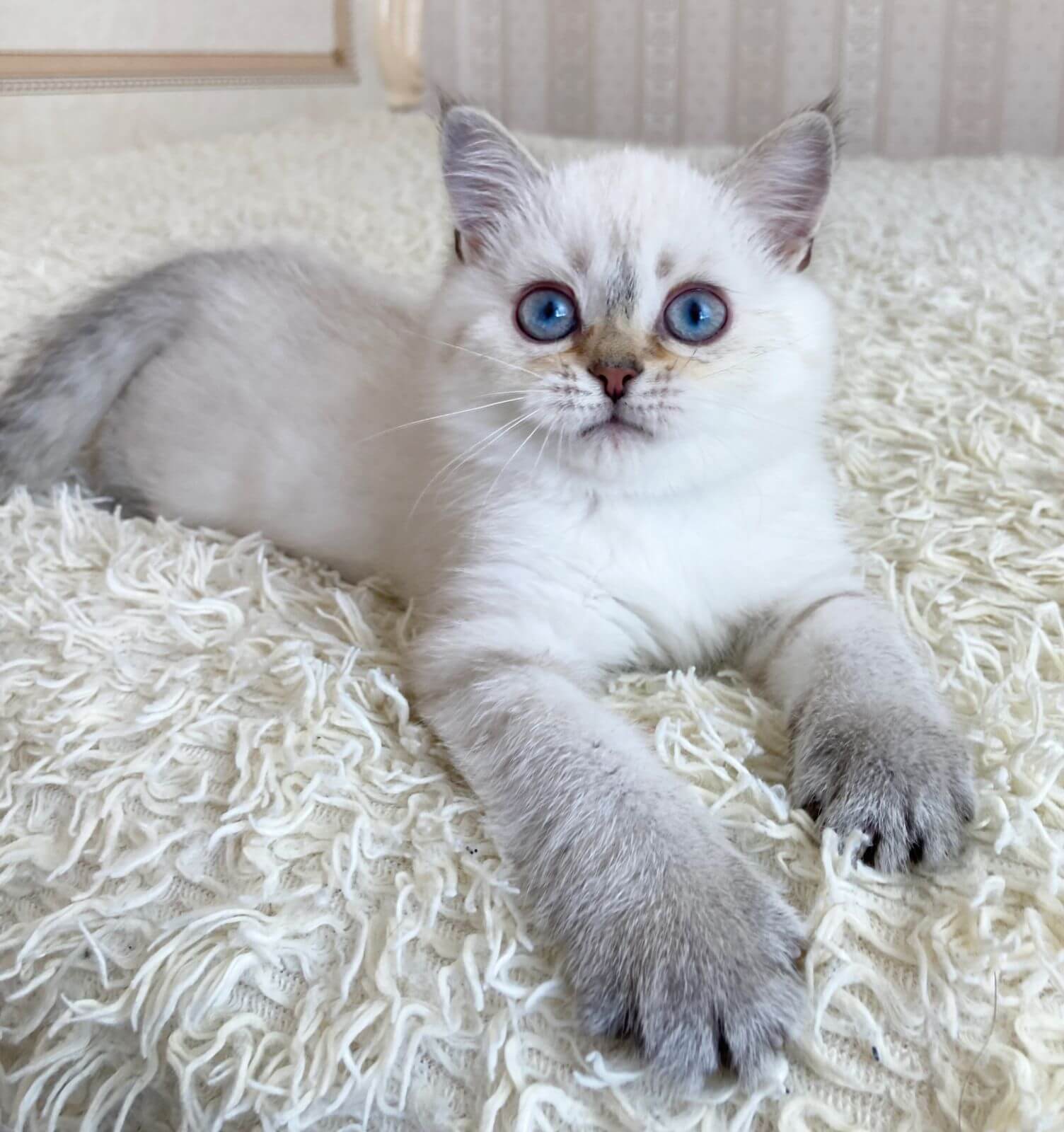
Reading Your Cat’s Coat
British Shorthair cats possess a dense, plush coat that requires regular care to maintain its vitality and prevent tangling. These short-haired cats aren’t as high-maintenance as long-haired breeds. Consistent grooming prevents matted fur, reduces shedding, and keeps their coat in tip-top shape. Reading your cat’s coat is all part of knowing when and how often to brush. Observe, feel, detect fur changes and adapt your routine accordingly.
- Check for fur that clumps or mats, it’s brush-time!
- Since you’re reading your cat’s coat, look for errant hairs on your clothes or furniture, displaying a bit more shedding.
- Check for spots that look oily, greasy, or dirty.
- Feel for rough patches, tangles, or knots.
- Look to see if your cat’s coat appears dull or lacks luster.
- Notice seasonal shedding in the fall and spring.
- Use these cues to determine if you need to brush more frequently.
Visual Cues
If you’re spotting fur clumps or visible dirt on your British Shorthair’s coat, it’s time for grooming. A cat’s luxurious coat can conceal mats close to the skin, so inspect problem areas such as behind the ears, under the arms, and around the neck. If you notice the coat beginning to appear dull or unkempt, it’s an indication your cat requires additional brushing.
Be on the lookout for texture changes in the coat. If it begins to feel harsh, a bi-level brush with bristles and metal pins will help you get things back on track. Shedding is highest in spring and fall, so watch for hair on furniture or your attire. You might want to brush your cat more frequently during these periods.
Touch Signals
Glide your hand along your cat’s body to check for tangles or mats. If you do, it’s an obvious indicator that additional grooming is required. Your cat’s coat should be soft and dense, not coarse or tacky. If your cat’s coat begins to feel oily or you discover greasy patches, increase brushing.
Your cat’s response counts too. If they pull or appear irritated, test for tangles or tender areas. Feel their coat and skin by hand to test its overall quality. A fit coat will be smooth and velvety, free of lumps and bumps.
Behavioral Indicators
If your cat purrs or leans in or melts when you groom, they dig it and you’re probably doing it correctly. Some cats can become agitated or attempt to escape, so watch for these indicators and have a willingness to stop.
Stress or agitation in brushing can signify you’re hitting a knotted spot or brushing too frequently. Modify the frequency with which you groom or utilize a gentler instrument if necessary. A peaceful, content cat in your arms while brushing indicates your routine is working.
Beyond the Brush
Care of a British Shorthair is more than once a week brush of dense fur. Not just brushing behind the ears – grooming encompasses nail trims, teeth cleaning, ears and eyes inspection and even the perfect bath. Getting all these bases covered will keep your cat healthy, comfortable and happy. Here’s a quick checklist: brush at least weekly, trim nails often, brush teeth daily, check ears and eyes, bathe only as needed, and visit your vet for routine check-ups. All of these steps count equally.
Nail Care
Cut your British Shorthair’s nails every two weeks or so, or sooner if they start snagging on clothing or clacking on hardwood floors. Overgrown nails can curl into the paw pads and cause pain or infection, so keeping ahead of this chore is crucial.
Take advantage of good cat nail clippers, not scissors or human tools. Cat nail trimmers have a shape that fits the claw and lets you avoid trimming near the quick, which can cause your cat pain. As you trim, watch for splitting or cracking nails. If you notice any wounds or blood, halt and consult your vet. Acclimating your cat to paw handling young allows you to establish a relaxed nail-trimming ritual for life.
Dental Hygiene
Dental care is a necessity for British Shorthairs, who are at risk for gingivitis. A daily brushing with cat-safe toothpaste prevents tartar and keeps breath fresh. Take a small pet toothbrush for comfort.
Regular dental checks with your vet are important. They can spot issues you may overlook at home, such as inflamed gums or loose teeth. There are cat-specific dental treats and toys that help keep teeth clean. Chomping these not only promotes dental hygiene but treats regular maintenance to feel like a rewarding experience for your kitty.
Ear and Eye Checks
Examine your cat’s ears and eyes weekly as you groom. Check for ears being red, oozing or smelling bad. If you find gunk or wax, wipe gently with a vet-approved solution, but never shove it down into the ear canal.
Eyes should be bright and clear. Any cloudiness, swelling, or heavy tearing means it’s time to check in with your vet. Early intervention stops potential headaches later.
Bathing Needs
Bathe your British Shorthair only when necessary, such as post-mess or in case of an oily coat. Too many baths remove natural oils.
ALWAYS use a mild, cat-formulated shampoo and lukewarm water. Give a good toweling dry, particularly during the cooler months, and your kitty will keep warm!


